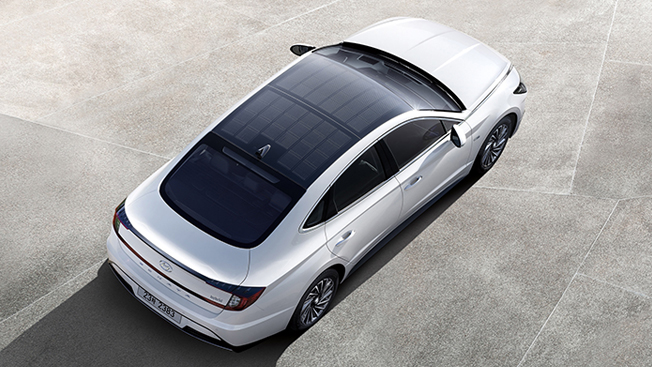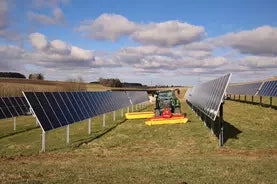https://www.pv-magazine.com/2023/01/09/sun-tracking-vs-fixed-vehicle-integrated-pv/
Sun-tracking vs. fixed vehicle-integrated PV

Image: Hyundai
Academics from universities in Ukraine, Latvia, and Slovakia have assessed the impact of vehicle-integrated photovoltaics (VIPV) on electric vehicle mileage. They used a 2017 Volkswagen e-Golf 7 series EV in Kyiv to determine the distance that solar electricity could power it on a single, full charge of its battery. They compared the results of a fixed VIPV system to a single-axis tracking system.
The group determined that the vehicle’s available rooftop area was 1,468 mm x 1,135 mm. Based on those dimensions, they assumed the car’s roof could accommodate two 120 W solar panels and one 50 MW monocrystalline module from Chinese manufacturer Xinpuguang. They connected the three panels in parallel, resulting in a maximum power of 257.92 W.
The researchers then calculated PV electricity generation on typical days in January, April, July and October. Using data from car tests by the New European Driving Cycle (NEDC) and the US Environmental Protection Agency (EPA), the academics compared the additional distance the EV could travel using solar energy. They assumed the solar modules could only charge the EV batteries while parked.
The results show that the fixed-VIPV system could produce 1,587 kWh of electricity in July, allowing the EV to travel 7.98 km according to the EPA standard, or 12.64 km according to the NEDC.
“These are 3.99% and 6.32% of the maximum range of the trip on a full charge of the battery, respectively,” the scientists said. In January, the fixed system produces 291 kWh, or a range of 1.55 km (EPA) and 2.32 km (NEDC), 0.77% and 1.16% of the maximum range, respectively.
The tracking system produces the same energy as the fixed system in summer, but its yield is superior in spring, autumn, and winter. The best results were in January, when the EV could travel 3.01 km (EPA) or 4.52 km (NEDC), which corresponds to 1.51% and 2.26% of the maximum possible mileage on a single battery charge, respectively.
Popular content
“The real advantages can be lower than the ones provided … due to the energy spent to adjust the sun-tracking roof platform and to possible constraints preventing perfect orientation,” the authors noted.
While the tracking VIPV system powers the EV for an extra 1.46 km to 2.2 km in January, the solution’s LCOE is 40% higher than the fixed-tilt system’s, the scientists claimed. According to their calculation, the LCOE of the PV system with zero degrees inclination is $0.6654/kWh. For a system with 20 or 80 degrees of inclination, the LCOE is $1.1013/kWh. The payback time of each system is 5.32 and 5.07 years, respectively.
“Given the small difference in the [payback period], an ordinary EV's driver can be satisfied with the system without inclination adjustment, since a sun-tracking roof platform requires significantly higher initial investment expenditures and makes more difficult the installation,” the scientists concluded.
The scientists described their findings in “Application of photovoltaic panels in electric vehicles to enhance the range,” which was recently published in Heliyon.
This content is protected by copyright and may not be reused. If you want to cooperate with us and would like to reuse some of our content, please contact: editors@pv-magazine.com.



